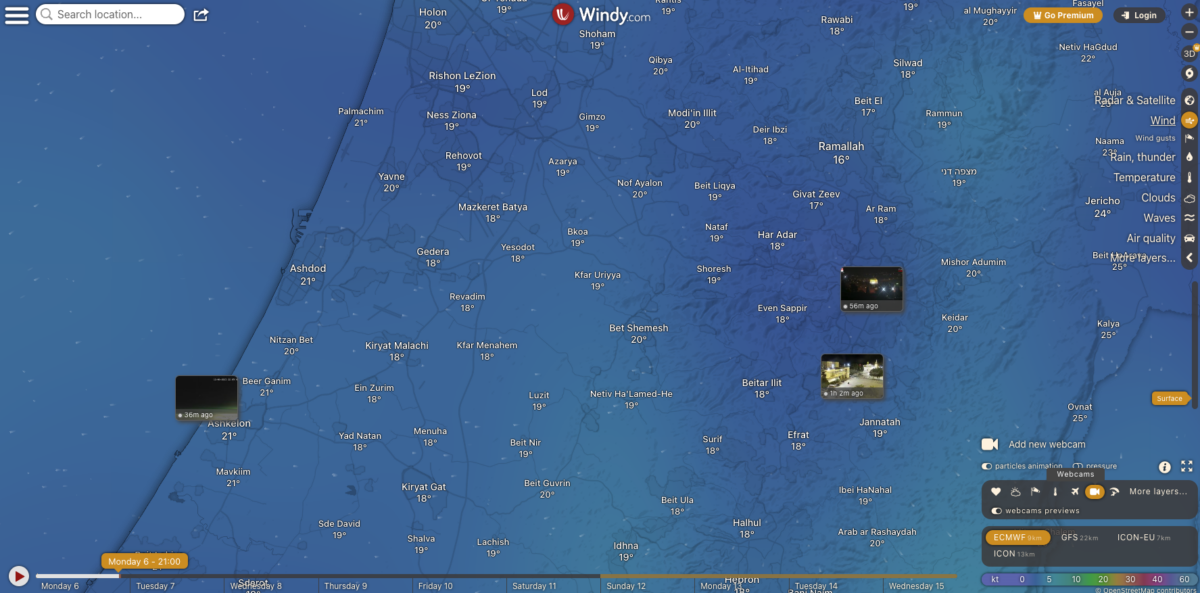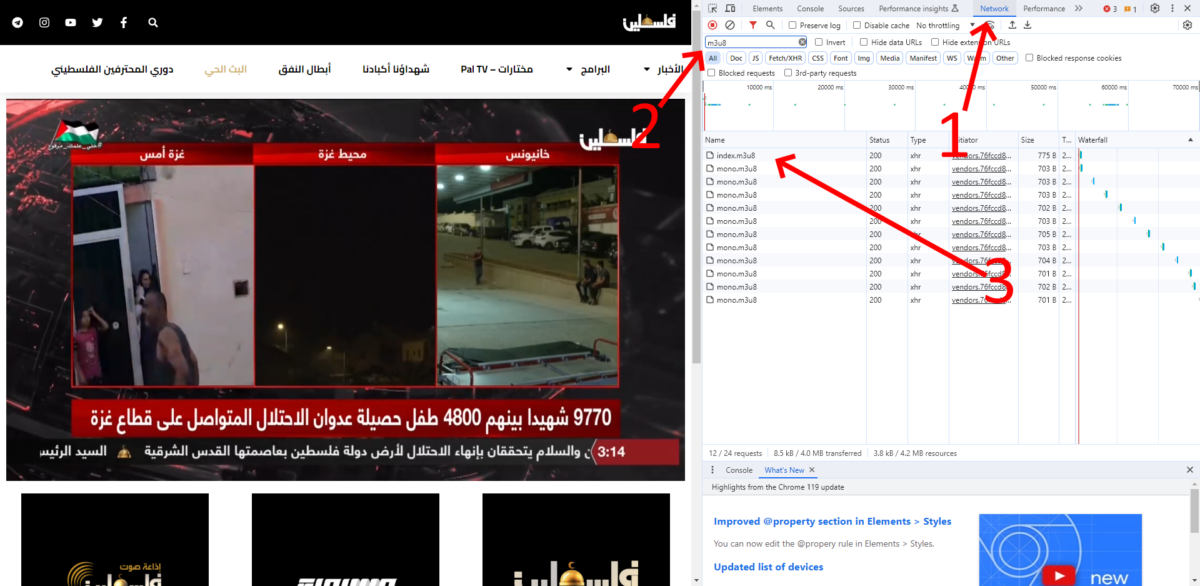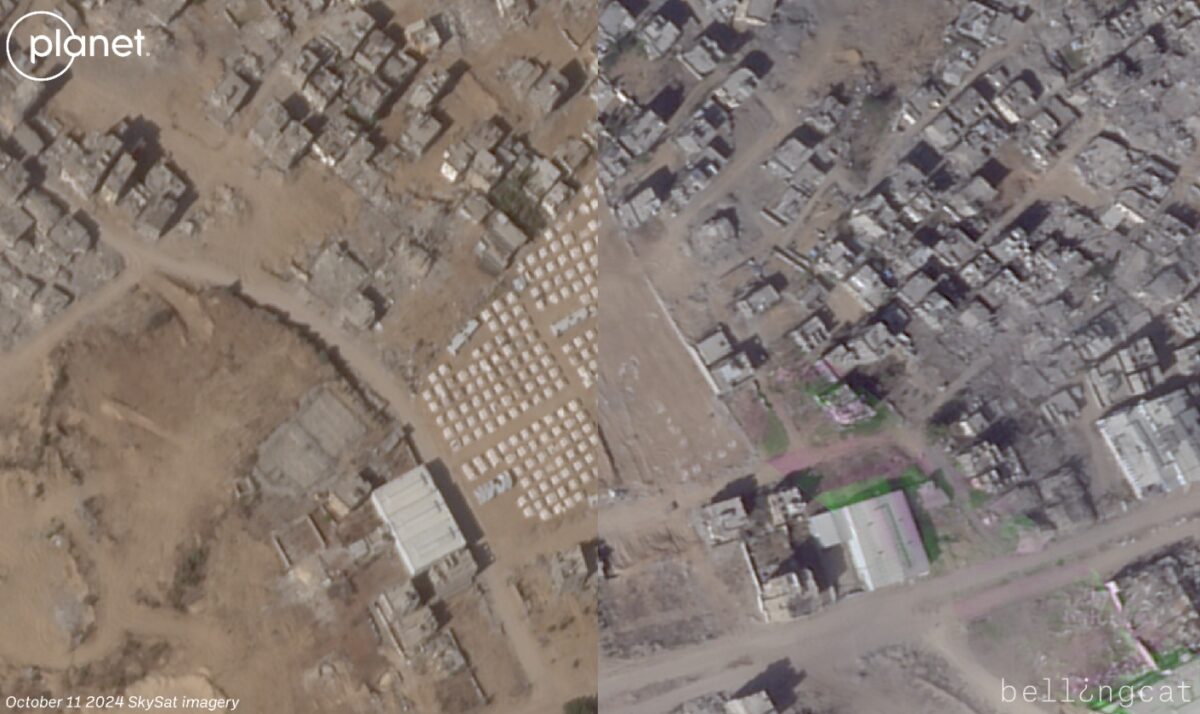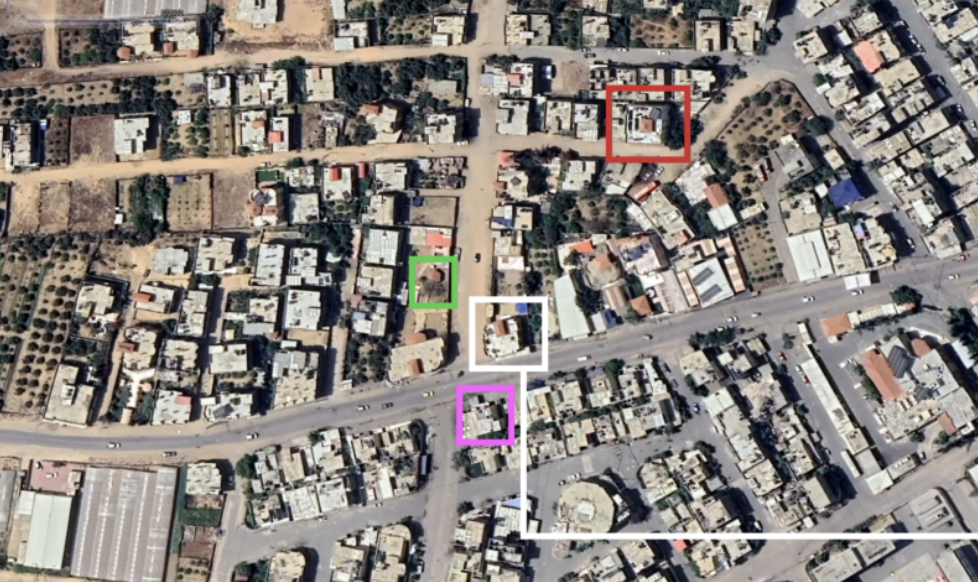Using Livestreams to Monitor Crises in Gaza and Beyond
Ten years ago, I sat in my dorm room watching the events of Ukraine’s Revolution of Dignity, the Euromaidan, play out live on my computer screen almost every night. I’d seen livestreams on news channels like Al Jazeera during the Arab Spring protests in 2011, but something about the independent and civilian nature of the footage coming out of the Euromaidan made it even more real, more haunting to watch.
Livestreams can be static (i.e. stationary CCTV cameras, which aren’t set up to capture specific events) or active (done by individuals deliberately at the scene of important events and only for a short duration to capture said events). This article covers both, as both are of incredible use to open source researchers.
Today, livestreams of tragedies are commonplace, as is their use by analysts and conflict monitors.
In the early days of Russia’s full-scale invasion of Ukraine, for instance, cameras all over the country were publicly accessible. They could be used to watch, in real-time, the movement of military formations and convoys. Some of the first footage of Russian soldiers invading the country came from CCTV cameras. Microphones on some cameras could also help determine when and where airstrikes and air raids took place. As the utility of this information to Russian military and intelligence is obvious, most of these live streams have since been removed.
The ongoing war in Gaza has been different. So far, Israel’s efforts to cut off power and restrict access to the territory have hampered the utility of cameras within the Gaza Strip. Thus, we have mostly been restricted to cameras put in place by news outlets just outside its borders.
Nevertheless, these livestreams can be an essential source of footage for open source researchers. Through years of watching and searching, I now subscribe to over 1,600 livestreams on YouTube. I will explain below how to find some of these sources and provide useful examples for monitoring events in Gaza.
But first, an important piece of advice: Do not rely solely on YouTube accounts that restream content. Always find the original source, if possible.
This is crucial because a number of users on YouTube and Twitch have gained remote access to cameras in conflict zones – first in Ukraine and now in Israel and Gaza. Sometimes their passwords have been changed so that only these users can use these cameras. However this happens, the result is that nobody else can access the original stream, thus nobody can verify that the information taking place on-screen is actually happening in real-time.
Considering that a number of these YouTube accounts have been found to restream old footage or add sound effects such as explosions to audio-free video streams, their utility for open source investigations is dubious at best.
Where to Look?
So which sources are most likely to pan out as high quality? For our purposes, the following news outlet-affiliated YouTube accounts are likely to provide regular livestreams from Gaza and the surrounding area:
Selecting a promising livestream depends on the event. Is this a regular, planned or long-term occurrence? Or is it an emergency or crisis situation breaking out in an unexpected place? This will determine where and how we search for sources.
Take, for instance, the crisis in Gaza. A quick search of “Gaza” on YouTube yields dozens of results and narrowing your search down to live events still leaves a great many options.
This is when it helps to have a broad sense of what you’re looking for. Let’s say we’re interested in rocket launches. For this purpose, useful live streams need show us a clear city skyline.
Helpfully, the weather monitoring website Windy.com has the option to display cameras in map overlays, showing you anywhere they have managed to locate live cameras with a view of a wide area. While practically done for meteorological purposes, this can be of great use for open source researchers looking for live feeds with good vantage points in a specific area.

When you find a livestream on Windy, you can either click through to view the livestream itself or the host’s website. The latter might allow you to find additional livestreams that aren’t listed on Windy, so is always worth a quick glance.
For example, one livestream shows the Old City of Jerusalem as seen from the New Gate. Clicking through to the source pulls up a YouTube channel, which as of this writing has two livestreaming cameras available in Jerusalem for viewing.

The livestream cameras on Windy tend to be set up in prominent places in major cities and weren’t necessarily created to monitor specific events.
So what if you need a livestream of a rapidly changing situation which may not be happening in, say, the central city square? Livestreams are often set up deliberately during crises or newsworthy events. Depending on the size of the event, international media outlets may dispatch camera teams, or may pay for coverage from such providers as Associated Press or AFP.
Either way, streams usually end up available on YouTube from major news providers. Thus, it behoves an open source researcher with an emphasis on a specific part of the world to spend a few hours bookmarking useful YouTube news sources.
These can be gleaned in a number of ways. By doing a quick Google search for “News channels in Iraq”, I was able to find the following Wikipedia page, which details every major news network in Iraq. Lyngsat, a website which streams TV and Radio channels around the world, is also a good source. Finding these outlets’ YouTube channels, which is more easily done by searching for them in their original language names, will likely reveal livestream sources.
Any YouTube search query can be narrowed down to livestreams by selecting the ‘live’ option in the ‘features’ filter.

The following image, for example, was captured when monitoring a Reuters livestream filmed from the Israeli town of Sderot, just beyond the borders of the Gaza Strip. Bellingcat used this footage in a recent investigation into an Israel Defense Forces (IDF) strike on the Jabalia refugee camp. Reuters and many other outlets often livestream for set periods of time and resume at a later date, and each new broadcast.
Unless they are deleted manually, YouTube preserves past streams, such as the one Bellingcat used in its Jabalia investigation that is archived here.

As I mentioned when reflecting on the events in Kyiv in 2014, another crucial source of livestreams are ordinary citizens and journalists. In the thick of things at protests and other important events, they use their smartphones to livestream what’s around them, albeit for a shorter period.
Finding these streamers, particularly those providing footage of the area of interest rather than just commentary on it in streams filmed from behind their computers, requires awareness of the specific social media scene on Twitch, Twitter or YouTube. The most prominent among them are often interviewed by the news media.
One example from Gaza in recent weeks is the Palestinian journalist Plestia Al-Aqad, whose videos and livestreams have been featured in international media. Whatever the positions of streamers themselves, the advantage of their footage to an open source researcher is that it can be independently assessed. Another journalist, Hassan Madhoun, has taken to YouTube on numerous occasions in recent weeks to livestream events from Gaza.
There are also some websites which compile links to livestreamers’ channels. An outstanding source of amateur livestreams by political activists in the US used to be Woke.net, which seems to have fallen dead in recent years. However, their “Streamers” page still offers a great list of people to follow on social media to see when they go live and stream from local protests across the US.
Last but not least are ‘static’ livestreams, set up in a particular area with no intention to monitor a particular newsworthy event. Several of the streams found earlier on Windy.com fall into this category. Security cameras and other CCTV sources can be phenomenal in terms of useful content. Bellingcat has analysed footage from CCTV cameras in several investigations, such as in coverage of Israel’s raids in the West Bank city of Jenin this July and in Russia’s strike on a shopping mall in Kremenchuk, Ukraine, in June 2022.
In the US, many cities and states provide livestreaming traffic cameras intended can to track vehicular flows in real time. They also show protests, major crisis events, parades, VIP visits, and much more. This map, for instance, shows every livestreaming traffic camera in the state of California.

Since 2020 I have been updating my list of states and cities in the US whose traffic camera streams can be publicly viewed online. Even more can be found with simple Google searches. “Locality Name” and “Traffic camera” or “DOT Camera” are great keywords to start with. Other sites, like Insecam, Earthcam, Surfline, and Baltic Live Cam provide access to other cameras around the world. Sometimes these camera feeds are dead or expired, which limits their utility, but sites like these are still worth checking.
A key question, and important issue to keep in mind, is why the stream has been hosted. Livestream aggregator websites may have monetary interests in mind, so it is important to research and review that interest before committing to a source. Surfline, for instance, is a commercial venture but is clearly aimed at one audience: the surfing world.
Monitoring en Masse
footage. The easiest way to do so is to use a website called VidGrid. VidGrid allows a user to watch between two and nine livestreams simultaneously in the same browser window. Each of these windows comes equipped with a dropdown menu of preloaded news outlets, from CNN and CBSN to Al Jazeera English and NHK. VidGrid can also accept custom YouTube URLs, along with streams from Twitch, Facebook, and several other livestreaming sites. The most important feature of VidGrid is its ability to play m3u8 links.
M3u8 links are a popular format for streaming video and radio, so are commonly found on livestream websites you may want to monitor. For example, ipTV is a project hosted on GitHub that catalogues every publicly-available streamed TV channel online. These channels are organised by type and country. Let’s pick the prominent channel Kanal24 from the website’s list of Ukrainian TV news channels.
The m3u8 URL linked alongside the entry for Kanal24 is https://streamvideol1.luxnet.ua/news24/smil:news24.stream.smil/playlist.m3u8. By taking that URL and pasting it into the window on VidGrid, you should be able to watch Ukrainian news alongside other livestreams This method can be replicated for other country pages on ipTV or for any other m3ua link you come across online.
To find m3ua links quickly, access the developer panel in your browser (for example, by pressing F12 in Google Chrome) while watching a livestreaming video. Let’s try the livestream of the Palestinian network Palestine TV which plays automatically when you open its page on Lyngsat here.
First, click the “network” tab in the developer panel. Then, type “m3u8” in the search bar. Finally, allow the livestream to play and wait for m3u8 links to appear. Right-click and choose “Copy link address”.

Paste that link (https://pbc.furrera.ps/palestinehd/tracks-v3a1/mono.m3u8) into VidGrid, and once again, the video will begin to play.
Keep Watching the Streams
All told livestreaming video can provide a fuller view of a situation to a researcher as it takes place in real-time. However, one must bear in mind the bias of the camera. That is to say: video sources are not always impartial. A well-placed news camera in the rowdiest part of a protest crowd, aimed upward from down low, may make a crowd look much larger and more violent than the average protester actually is.
The camera also provides only one, often fixed view of a situation. It should not be considered the end-all, be-all of open source research. But live cameras have allowed me, and many others like me, to glimpse into worlds we never would have seen otherwise.
To conclude, consider the brave individuals at Zaphorizhzhia Nuclear Power Plant in southern Ukraine. When their plant came under assault by Russian forces in March 2022, a decision was made to activate the exterior security camera and hook it up to the plant’s YouTube channel.
The video feed went out to the world, eventually being picked up by CNN and broadcast in real time as Russian troops shot and shelled the largest nuclear power station in Europe. Twenty four hours later, the UN Security Council met and discussed that very video. The world has changed, and with it has come a powerful new tool for the open-source researcher. Learning to utilise this potent stream of information is a key skill for any up-and-coming open source researcher.
To learn more about the role of livestreams in open source research, you can listen to Aram’s recent Bellingcat Stage Talk on the topic here. You can also join our Discord, whose members have in recent weeks discussed the latest in livestreams from Israel-Palestine.


